The “Disappearing” of Croatian Art in Hungarian Art Exhibitions at the Turn of the 20th Century
Abstract
1. Introduction
2. Literature Survey
Budapest 1896
3. Croatian Exhibition: Description
4. Croatian Exhibition: Official Hungarian Reception
In the Croatian-Slavonian Art Hall we thought several times: what a pity that the products of Croatian sister artists have so rarely, or rather never found their way into the exhibitions of the Hungarian capital! How interesting it would be to study the differences of their color poetry in comparison to ours. In filling this gap, we hope to be able to welcome next year one of the precious achievements of the millennium celebration.38
Due to the lively impulse given by the national government to the above-mentioned artists mainly for the large hall of the Department of Religion and Public Education and for churches, we can only now speak of an artistic movement in Croatia. It is to be hoped that this new formation in the development of our art will rise to a considerable degree of artistic perfection if many young workers join these artists, who, with the aid of the national government, receive their training at the various art institutes of the monarchy and abroad at this time.45
5. Croatian Exhibition: Popular Hungarian Reception
6. Croatian and Hungarian Painting in Copenhagen, 1897
7. 1898, the Year of Croatian Artistic Independence
8. Croatian Art and Its Relationship with Vienna
9. Paris 1900
10. Croatian Art: Hungarian Descriptions
[the] lively interest aroused in the whole nation give reason to hope that the artistic movement which is manifesting itself in the Croatian capital will exercise a salutary influence on the intellectual life of the Slavs of the south of the monarchy, similar to the effect produced by Croatian literature.
11. Croatian Art: Foreign Descriptions
The painters of the minor States and dependencies of the multitudinous Austrian Empire give evidence, in their works, of various qualities which bring them closely in touch with those of other European schools, more especially the contemporary ones, and also of various national and local characteristics which serve to distinguish them,—and which yet may be claimed to be more local variations and accents and not truly distinguishing and separating traits.
12. St. Louis Description
Funding
Data Availability Statement
Conflicts of Interest
| 1 | In addition to the various catalogs, guides, and official publications, there is at least one article quite germane to this paper: (Matoš 1985). |
| 2 | (Bennitt and Stockbridge 1905; Roosevelt and Senate Committee on Industrial Expositions 1906). A more modern work is (Hollengreen et al. 2014). |
| 3 | The Austrian portion of the Austro-Hungarian Empire will be referred to as cis-leithania; the Hungarian portion, unless actual ethnicity is being discussed, will be referred to as trans-leithania. |
| 4 | The monuments themselves were meaningful enough for a commemorative volume to be published (Erdélyi 1898), especially chapter 12. The complexity of meaning and the local, individual histories of various events, particularly monuments, such as the towers erected, are thoroughly and well discussed in (Varga 2016), especially chapter 12. |
| 5 | Now the Number 1 Line of the Budapest metro, it was originally named Ferenc József Földalatti Villamos Vasut/The Franz Josef Underground Electric Train. The first underground electric railway on the European continent, its original kiosks were the model for those of New York City’s IRT. |
| 6 | The sources for the architectural details as well as the history of the fair’s architecture and design and images of the major structures can be found in (Bálint 1897a). |
| 7 | A thorough discussion and documentation of the historical sources is found in (Bálint 1897b). |
| 8 | See (Perczel 2016; Kristan and Albert 1996). A similar competing, though not as successful, endeavor was Konstantinápoly Budapesten/Constantinople in Budapest, located on the banks of the Danube, where the Technical University now stands. See (Kovács 2021). |
| 9 | |
| 10 | Flóris Nándor Korb (1860–1930) and Kálmán Giergl (1863–1954) were ultimately responsible for several buildings at the Millenium Exhibition. In addition to the Croatian Art Pavilion, Korb & Giergl designed the Mining and Metallurgy Pavilion, the Salgótarján Coal Mine Company pavilion, the Machine Hall, the Golden-Book Pavilion, which housed a souvenir book that every visitor was encouraged to sign, and finally, the Brewers Restaurant. The extensive range of their activities is recounted in (Gerle 2010). |
| 11 | (Clegg 2006). Although the firm is best known for its theater projects, in locations ranging from Hamburg to Sofia, they also produced numerous houses and social clubs. For the theaters particularly, see (Hoffmann 1966). For work in Zagreb, though not the Art Pavilion, see (Damjanović and Iveljić 2015). |
| 12 | (Gábor and Vero 1996). And more recently, (Muladi 2015). |
| 13 | The problem of nomenclature in this paper is a complex one; there are artists’ names and work names in Hungarian, Croatian, French, and English. For uniformity, the artists’ names will use the Croatian spelling, and the names of works of art will either be in Croatian or English. |
| 14 | Bukovac (1855–1922) was born Biagio Faggioni in Cavtat, Dalmatia. Though initially intending to be a sailor, injury forced him to abandon this dream. He began painting as an amateur. Beginning in 1877, he began formal study at the École des Beaux-Arts with Alexandre Cabanel. Although he continued to travel throughout Europe, from 1893 to 1903, he was based in Zagreb, where he was active in creating a new, national Croatian art. In 1903, he was appointed associate professor at the Academy of Fine Arts in Prague, where he taught and resided until his death in 1922. |
| 15 | All data concerning the Croatian art exhibition are drawn from (Horvát—És Szlavonország 1896). |
| 16 | The visit was not without issues. Protesting students burned the Hungarian flag, forcing a shutdown of higher education and providing clear evidence of the nationalist Croatian bridling at Hungarian rule. See (Racko 1990). |
| 17 | Little is known about these two female artists. Löwenthal does not appear to have exhibited with the Croatian cohort after Budapest, although she did have two works displayed at the 1913 Vienna “Ausstellung künstlerischer Amateurarbeiten”. (Katalog der Ausstellung 1913), entries 280 and 1089. She was also possibly the subject of one of the Croatian paintings exhibited in Paris in 1900 (the Hungarian catalog and the French catalog differ in the listing of works). Even less seems to be known about Schmigoz. There is currently interest in the role of women in turn-of-century Austria, as evidenced by (Johnson 2012), as well as (Johnson 1997). See also (Brandow-Faller 2020). |
| 18 | The birth and death dates for two of the exhibiting artists—Hermina Schmigoz and N. Kaltenecker—are not yet known. |
| 19 | Filip first studied at the Academy of Applied Arts and Design in Zagreb, then in Munich, and subesquently in Paris. |
| 20 | Tišov first studied at the Academy of Applied Arts and Design in Zagreb and then at the the Academy of Applied Arts and Design in Vienna. |
| 21 | Iveković studied at the Academy of Fine Arts in Vienna, 1887–1891, then briefly in Munich. |
| 22 | Csikos-Sessia studied at the Academy of Fine Arts in Vienna, 1887–1892, then in Munich. |
| 23 | Crnčić studied painting at the Academy of Fine Arts in Vienna, 1882–1884, and then graphics, 1894–1897. From 1889 to 1892, he studied in Munich. |
| 24 | Mašić originally began studying in Vienna at the Business Academy and in 1872 switched to the Academy of Fine Arts. Shortly thereafter, he transferred to the Academy of Fine Arts in Munich. |
| 25 | Aleksander studied at the Academie Julian from 1894 to 1896. In 1898/1899, he studied in Vienna at the Academy of Fine Arts. |
| 26 | Bukovac was at the Paris Ecole des Beaux-Arts from 1877 to 1880. |
| 27 | The great difficulty arises from the fact that, while the image titles (both in Hungarian and Croatian) at the exhibition are known, the names are sometimes changed over time. And while their appearance in black and white is also known, the quality of the available images only provides the grossest of detail. Generally, their current locations are often unknown. |
| 28 | The image can be viewed at https://mng.hu/mutargyak/144/ (accessed on 5 January 2025). |
| 29 | The image can be viewed at https://nmmu.hr/2021/07/26/vlaho-bukovac-gundulic-zamislja-osmana-1894/ (accessed on 5 January 2025). |
| 30 | The image can be viewed at https://en.wikipedia.org/wiki/1895_visit_by_Emperor_Franz_Joseph_to_Zagreb#/media/File:%C5%BDivio_kralj_Vlaho_Bukovac.JPG (accessed on 5 January 2025). |
| 31 | The image can be viewed at https://mng.hu/mutargyak/572/ (accessed on 5 January 2025). |
| 32 | The image can be viewed at https://nmmu.hr/2022/05/31/anton-toni-aron-hrvatski-seljak-vodi-slijepu-kcer-1888/ (accessed on 5 January 2025). |
| 33 | Two of these works, Dubravka and The Srijen Martyrs, along with Robert Frangeš’ Roman Citizen, are currently in the collection of the Hungarian National Gallery. They were acquired shortly after the fair. (Tóth 2006, pp. 147–48) and Műcsarnok, vol. 2, n. 22, 18 June 1899, p. 341. |
| 34 | Keleti (1834–1903) served for two decades (1874–1894) as president of the Képzőművészeti Társulat/Fine Arts Society. Additionally, he was the first director of the Magyar Királyi Iparművészeti Tanoda/ Royal Hungarian School of Applied Arts, which was founded in part as the basis of his A képzőművészeti oktatás külföldön és feladatai hazánkban/Instruction in Fine Arts Abroad and Its Tasks Domestically, the result of a study he undertook visting Applied Art schools in France, Germany, and Belgium in 1871. |
| 35 | Az egymással való közelebbi megismerkedés, a mely kölcsönös megbecsülésre vezet, legtermészetesebb útja es legbiztosabb ’alapja—úgy egyes emberek, mint nemzetek között is—az érdekközösség, az együvé tartozás, a testvériség érzeté kifejlődésének. Ezt a tarsorszagokhoz való viszonyában a magyarság soha élénkebben engesztelőbb es jótékonyabb módon nem tapasztalta, mint az ezredeves kiállítás alkalmával, melynek területen Horvat-Szlavonorszag három, szorosan véve négy hatalmas pavilion impozáns kereteben mutatta be közgazdasági es kulturális haladásának szemmel látható es kézzel fogható bizonyítékait. Velünk érző bölcs királyunk valóban az egész nemzet közvéleményének es közmegelégedésének adott kifejezést, a mikor a horvat-szlavon kiállítási pavillonok megtekintésé alkalmával örömét nyilvánította a fölött, hogy a testvérnemzet meglepő részvéte által ez alkalommal oly fényes tanúságot tett az anyaországgal való együvétartozásának őszinte, érzetéről. (Keleti 1898, p. 273). |
| 36 | Bizonyára ő ez idő szerint a horvát előkelő társaságnak legkeresettebb arczképfestője, a mit nemcsak kiállított arczképeinek nagy számából, de az ábrázolt személyiségek társadalmi állásából is következtethetünk. (Keleti 1898, p. 275). |
| 37 | The image can be viewed at https://nmmu.hr/wp-content/uploads/2021/07/MG-7088-4-768x440.jpg (accessed on 5 January 2025). |
| 38 | A horvát-szlavon műcsarnokban többször elgondoltuk: milyen kár, hogy a horvát testvérművészek termékei oly ritkán, jobban mondva, eddig még soha sem találtak utat a magyar főváros tárlataiba! Mily érdekes volna belőlük az ő színpoézisuk árnyalatkülönbségeit a mienkkel összehasonlítva tanulmányozni. E hiány pótlásában reméljük jövőre az ezredévi ünnep egyik becses vívmányát üdvözölhetni. (Keleti 1898, p. 279). |
| 39 | The catalog appeared in at least three languages, with no editorial changes: Hungarian, Croatian, and German: (Kraljevine Hrvatska 1896; Die Königreiche 1896). |
| 40 | In the case of the Fine Arts, which is the only catalog closely studied, there are some variants in the names and numbers of works displayed among the various language editions. |
| 41 | Horvát-Szlavonországban régebbi időből önálló művészetnek nem akadunk nyomára. (Horvát—És Szlavonország 1896), p. 185. |
| 42 | Mint kész festők költöztek Zágrábba néhany évvel ezelőtt Bukovac Vlaho és Medović Celesztin, mindkettő dalmát eredetü. Az előbbi Amerikában, főleg pedig Párisban, Cabenelnál képezte ki magát, mig az utóbbi Münchenben nyerte művészeti képesítését. (Horvát—És Szlavonország 1896), p. 187. |
| 43 | A festészet terén fáradozó ifjabb erők… (Horvát—És Szlavonország 1896) p. 187. |
| 44 | The history of the commissions, as well as extensive documentation of the artists’ work, is found in (Vugrinec et al. 2020). |
| 45 | Az országos kormány által főleg a vallás- és közoktatásügyi osztály nagy terme és a templomok számára tett megrendelésekkel a föntemlített művészeknek adott élénk impulzus folytán tulajdon képen csak mostanában szólhatunk Horvátországban művészeti mozgalomról. Bizvást remélhető, hogy a művészetünk fejlődésében beállott ezen uj alakulat a művészeti tökély jelentékeny fokára fog emelkedni, ha majd az említett művészekhez sok fiatal munkás szegődik, kik az országos kormány segelyével a monarchia és a külföld különböző művészeti intézeteiben nyerik ez idő szerint kiképzésüket. (Horvát—És Szlavonország 1896), p. 187. |
| 46 | A kiállítás szebb épületei sorába tartozik. Építészeti szemle, vol 5, number 2, 1896, p. 35. |
| 47 | Legalább is tízszer akkora, mint a fennebb ismertetett Telefon-Hírmondó pavillonja, de azért nincs több dekoratív elem rajta, mint amazon. Építészeti szemle, vol 5, number 2, 1896, p. 35. |
| 48 | A tapontatos és ügyes elrendezés által e csoport mindenkép mutatós és imponáló benyomást gyakorol a látogatókra, kik meglepetve konstatálják, hogy mily nagymérvű tevékenységről számol be a horvátok műigénye. Ámde közelebbről szemügyre vévén a sok képet—dacára, hogy a katalógus húsz festő nevét jegyzi föl—mögöttük mindössze négy számottevő egyéniséget bírunk fölfedezni, s ezek közt is a dicsőség oroszlánrésze Dukovác Vlahot illeti meg, ki több mint fele részét szolgáltatta a kiállított festményeknek. Építészeti szemle, vol 5, number 7, 1896, p. 158. |
| 49 | Pesti Hírlap, volume 18, number 191, July 13, 1896, p. 1. |
| 50 | Mert Bukovac olyan eleven, olyan friss erőtől duzzadó egyéniség, aki csakhamar behizelgi magát szívünkbe s akinek eddigi távolmaradását a budapesti nemzetközi tárlatokról csakis sajnálhatjuk. Pesti Hírlap, volume 18, number 191, July 13, 1896, p. 1. |
| 51 | Lám, a Zrínyi Miklós közkedvelt alakja is mutatja, hogy sokszor megfértünk mi a horvát testvérekkel, anélkül, hogy örökösen egymás fejét cibáltuk volna. Pesti Hírlap, volume 18, number 191, July 13, 1896, p. 3. |
| 52 | Kép és szobormű a két teremben van elég, de ugyanazon névvel minduntalan találkozunk s talán nem nagyítás tőlem, ha azt állítom, hogy a Budapesten szereplő horvát művészeket a tíz ujjamon is kényelmesen elő tudnám számolni. Tams Szana, Fovarosi Lapok, vol 33, no. 161, June 12, 1896, p. 1. |
| 53 | Though most commonly thought of as a Viennese author, Hevesi was born in Hungary. Only in the 1870s did he move to Vienna and began work as a journalist. Interestingly, most of his work is in German. See (Sármány-Parsons and Czabó 2015). |
| 54 | Jan Matejko (1838–1893), the leading history painter of Poland in the 19th century. |
| 55 | Pyotr Petrovich Vereshchagin (1834–1886), a Russian academic painter of the 19th century. |
| 56 | Sage mir, was du issest, und ich will dir sagen, mit welchen Farben du deine Bilder malst. Kroatishe Kunst, Pester Lloyd 1. Beilage vol. 171, July 12, 1896, p. |
| 57 | Jacobsen’s correspondance can be found in the online archive of the Ny Carlsberg Glyptotek: https://brevarkivet.ny-carlsbergfondet.dk/en/soeg (accessed on 5 January 2025). The letter cited here can be found at https://brevarkivet.ny-carlsbergfondet.dk/en/d/ylxA?q=1897 (accessed on 5 January 2025). |
| 58 | Udstillingens Hovedformaal er at give en historisk Oversigt over den Maade hvorpaa den nyere Kunst i Europa har udviklet sig. Man har derfor taget enkelte Billeder med af de store afdøde Mestre fra Aarhundredets Midte og iblandt de Nyere har man lagt særlig an paa at faa alle Retninger repræsenterede af de bedste Kunstnere x); man vil derfor finde Akademikere og Secessissionister udstillede ved Siden af hinanden. Hver Nation faar sin særskildt Sal, hvilket vil lette Oversigten betydeligt. |
| 59 | I Modsætning til hvad der sædvanlig finder Sted, have ved denne Udstilling alle Deltagere faaet særlig Indbydelse for at den ikke skulde blive overfyldt med Arbeider af lavere Rang. |
| 60 | For a study on the differences between the Budapest version and the Zagreb version, see (Perušić 2015). |
| 61 | The history of the pavilion is well documented in (Ukrainčik 2000). |
| 62 | Information regarding the show and the participating artists is drawn from (Hrvatski Salon 1898). |
| 63 | The history and organization of the show is fully and thoroughly explored in (Ukrainčik and Reberski 1998). |
| 64 | A fuller account of this cultural art organization, though more centered on Vienna than Budapest, can be found in (Heerde 1993). |
| 65 | For Vienna, see (Wagner 1967). |
| 66 | The relationship between Croatian painters and Munich is the subject of (Kraševac and Prelog 2009, 2011; Prelog 2010). |
| 67 | The Hungarian presence and experience in Munich is explored in (Hessky and Bakó 2009). The influence of Ažbe is documented in (Ambrozic et al. 1988). |
| 68 | Baumann was responsible for a number of exhibitions and exhibition buildings: the Vienna 1898 Jubilee exhibition building, the Paris 1900 Austrian “Reichhaus”, the design of the London 1902 Applied Arts Exhibition, the 1902 Turin International Exhibition for Modern Art and Decoration, the St. Louis 1904 Austrian Pavilion, and the 1906 Milan International Traffic Exhibition’s Austrian Pavilion. For his general work, see (Kolowrath 1985). For his work at the Paris Exhibition, see (Peck 2022). |
| 69 | For extensive documentation of this activity, see (Hlavacka et al. 2002). |
| 70 | En dehors des célèbres peintres du Cinquecento, Julio Clavio, Medulic, et le prêtre Mathias de Miletince, nous ne trouvons presqu’aucune trace qui dénoterait un mouvement artistique en Croatie-Slavonie pour le moyen-âge. (Lippich 1900, p. 46). |
| 71 | L’esprit de suite et l’activité infatigable de ladite Société, l’appui afficace du ban, comte Khuen-Héderváry, et le vif intérêt mis en éveil dans la nation entière permettent d’espérer, que le mouvement artistique qui se manifeste dans la capitale croate, exercera sur la vie intellectuelle des Slaves du midi de la Monarchie une influence salutaire, similaire à l’effet produit par la littérature croate. (Lippich 1900, p. 48). |
| 72 | (Ivčević and Mihaljević 1908). The history and effect of the show are discussed at length in (Majstorović et al. 2011). |
| 73 | The image can be seen at https://nmmu.hr/2023/06/20/vlaho-bukovac-moje-gnijezdo-1897/ (accessed on 5 January 2025). |
| 74 | For more information about the architecture of the pavilion, see (Albert 2023). |
| 75 | A complete listing of the shows can be found in (Ukrainčik and Reberski 1998). |
| 76 | A more complete history of the exhibition and of the attraction the Austrian Riviera held can be found in (Rapp and Rapp-Wimberger 2013). Ursula Storch’s contribution, “Der Süden ist eine Haltestelle unserer Elektrischen geworden”, is of particular interest. |
References
- Albert, Samuel D. 2023. Austria and Hungary at the 1904 St. Louis World’s Fair: A Hint of the End. Journal of Austrian-American History 7: 109–37. [Google Scholar] [CrossRef]
- Alujević, Darija, and Petra Vugrinec. 2020. Croatian Artists at the Millennial Exhibition in Budapest 1896. In Ars et Virtus. Croatia-Hungary: 800 Years of Shared Cultural Heritage. Edited by Dragan Damjanović, Petra Vugrinec, Andreais Sudec and Marina Bagarić. Zagreb: Klovićevi Dvori Gallery, Budapest: Hungarian National Museum, pp. 293–317. [Google Scholar]
- Alujević, Darija, Marina Bagarić, Irena Kraševac, Stella Rollig, and Petra Vugrinec. 2017. Herausforderung Moderne—Wien und Zagreb um 1900. Wien: Belvedere. [Google Scholar]
- Ambrozic, Katarina, Siegfried Wichmann, and Anica Cevc. 1988. Wege zur Moderne und die Ažbe-Schule in München = Pota k Moderni in Azbetova sola v Münchnu. Recklinghausen: A. Bongers. [Google Scholar]
- Ausstellung Dalmatinischer Bildender Künstler: Adria Ausstellung Wien Mai—Oktober 1913. 1913. Wien: Verein zur Förderung der Volks-Wirtschaftlichen Interessen des Königreiches Dalmatien.
- Bálint, Zoltán. 1897a. Az Ezredéves Kiállítás Architekturája: A Kiállítás Igazgatóságának, a Magy. Mérnök-és Építész-Egyletnek, a Kiállítási Építkezéseknél Közremüködött Építészeknek Tamogatásával. Bécs: Schroll A. és T. [Google Scholar]
- Bálint, Zoltán. 1897b. Die Architektur der Millenniums-Austellung: Mit Unterstützung der Ausstellung-Direction des Ungarischen Ingenieur- und Architekten-Vereines, Sowie der Architekten, Welche bei den Ausstellungsbauten Mitwirkten. Wien: A. Schroll. [Google Scholar]
- Bennitt, Mark, and Frank Parker Stockbridge. 1905. History of the Louisiana Purchase Exposition: Comprising the History of the Louisiana Territory, the Story of the Louisiana Purchase and a Full Account of the Great Exposition, Embracing the Participation of the States and Nations of the World, and Other Events of the St. Louis World’s Fair of 1904. St. Louis: Universal Exposition Pub Co. [Google Scholar]
- Brandow-Faller, Megan. 2020. The Female Secession: Art and the Decorative at the Viennese Women’s Academy. University Park: The Pennsylvania State University Press. [Google Scholar]
- Champier, Victor, André Saglio, and William Walton. 1900. Exposition Universelle, 1900; The Chefs-D’œuvre. 10 vols. Philadelphia: G. Barrie & Son. [Google Scholar]
- Clegg, Elizabeth. 2006. Art, Design, and Architecture in Central Europe, 1890–1920. New Haven: Yale University Press. [Google Scholar]
- Damjanović, Dragan. 2010. Herman Bollé and Croatian Pavilions at the Exhibitions in Trieste (1882) and Budapest (1885 and 1896). Centropa 10: 231–43. [Google Scholar]
- Damjanović, Dragan. 2015. Croatian Pavilions at the 1896 Millennium Exhibition in Budapest. In Ephemeral Architecture in Central and Eastern Europe in the 19th and 20th Centuries. Edited by Miklós Székely. Paris: L’Harmattan, pp. 51–74. [Google Scholar]
- Damjanović, Dragan, and Iskra Iveljić. 2015. Architecture Studio Fellner & Helmer and the Pongratz Family. Radovi Instituta za Povijest Umjetnosti 39: 121–34. [Google Scholar]
- Die Königreiche Kroatien und Slavonien auf der Milleniums-Landesausstellung des Königreichs Ungarn in Budapest 1896. 1896. Agram: Königl. Landesdruckerei.
- Erdélyi, Mór. 1898. A magyar állam Ezeréves Fennállását Megörökítő hét Vidéki Emlékmű. Budapest: Erdelyi, pp. 896–1896. [Google Scholar]
- Erdélyi, Mór. 1901. Magyarország a Párisi Világkiállitáson, 1900. Budapest: Hornyánszky V. [Google Scholar]
- Filipová, Marta. 2015. Cultures of International Exhibitions, 1840–1940. In Great Exhibitions in the Margins. Farnham and Burlington: Routledge. [Google Scholar]
- Fleischer, Gyula. 1935. Magyarok a Bécsi Képzőmüvészeti Akadémián. Budapest: Magyar Tudományos Akadémia Kiadása. [Google Scholar]
- Fried, Ilona. 2005. Fiume Città Della Memoria: 1868–1945. Civiltà del Risorgimento. Udine: Del Bianco. [Google Scholar]
- Gábor, Eszter, and Mária Vero. 1996. Schickedanz Albert (1846–1915): Ezredévi Emlékművek Múltnak és Jövönek. Budapest: Magyar Nemzeti Múzeum. [Google Scholar]
- Gelléri, Mór. 1896a. Az Ezredéves Országos Kiállítás Kalauza, 2nd ed. Budapest: Kosmos. [Google Scholar]
- Gelléri, Mór. 1896b. Exposition Nationale du Millénaire: Guide Rédigé d’après les Documents Authentiques. Budapest: Kosmos. [Google Scholar]
- Gelléri, Mór. 1896c. Führer Durch die Millenniums-Landes-Ausstellung, auf Grund Officieller Daten Redigirt von Moriz Gelleri. Budapest: Kosmos. [Google Scholar]
- Gelléri, Mór. 1896d. Guide Through the Hungarian National Millennium Exhibition, from Official Dates revised by Moriz Gelléry. Budapest: Kosmos. [Google Scholar]
- Geppert, Alexander C. T. 2010. Fleeting Cities: Imperial Expositions in Fin-de-Siècle Europe. Houndmills, Basingstoke, Hampshire and New York: Palgrave Macmillan. [Google Scholar]
- Geppert, Alexander C. T., Jean Coffey, and Tammy Lau. 2001. International Exhibitions, Expositions Universelles and World’s Fairs, 1851–1951 a Bibliography. Cottbus: Brandenburgische Technische Universität. [Google Scholar]
- Gerle, János. 2010. Korb Flóris, Giergl Kálmán. Epítészet mesterei. Budapest: Holnap. [Google Scholar]
- Gulyás, Borbála. 2011. A Horvát Műcsarnok az 1896-os Ezredéves Kiállításon. In Kultúra, Nemzet, Identitás. Edited by József Jankovics and Judit Nyerges. Budapest: Nk Magyarságtud. Társ Budapest, pp. 102–18. [Google Scholar]
- Heerde, Jeroen Bastiaan van. 1993. Staat und Kunst: Staatliche Kunstförderung, 1895–1918. Wien: Böhlau. [Google Scholar]
- Hessky, Orsolya, and Zsuzsanna Bakó. 2009. München, Magyarul: Magyar Művészek Münchenben, 1850–1914. Magyar Nemzeti Galéria kiadványai. Budapest: Magyar Nemzeti Galéria. [Google Scholar]
- Hlavacka, Milan, Jana Brabcová-Orlíková, and Petr Stembera. 2002. Alfons Mucha, Paríz 1900: Pavilon Bosny a Hercegoviny na Svetové Výstave = Alfonse Mucha, Paris 1900: The Pavilion of Bosnia and Herzegovina at the World Exhibition. Prague: Obecní dum. [Google Scholar]
- Hoffmann, Hans-Christoph. 1966. Die Theaterbauten von Fellner und Helmer. Studien zur Kunst des neunzehnten Jahrhunderts. München: Prestel. [Google Scholar]
- Hollengreen, Laura Holden, Celia Pearce, Rebecca Rouse, and Bobby Schweizer. 2014. Meet Me at the Fair: A World’s Fair Reader. Pittsburgh: Carnegie Mellon University, ETC Press. [Google Scholar]
- Horel, Catherine. 2016. Fiume-Rijeka, Frontières et Identités 1880–1921. Balkan Studies/ Etudes Balkaniques 52: 282–312. [Google Scholar]
- Horvát—És Szlavonország a Magyarország Ezeréves Fennállásánka Megünneplésére Budapesten 1896.-Evben Rendezett Országos Kiállitáson. 1896. Zágráb: “Narodne Novine” Nyomdája.
- Hrvatski Salon. 1898. Zagreb: Umjetnički paviljon.
- Ivčević, Vicko, and Vicko Mihaljević. 1908. Katalog Prve Dalmatinske Umjetničke Izložbe: September 30—November 31, 1908. Split: Splitska Društvena Tiskara. [Google Scholar]
- Johnson, Julie M. 1997. From Brocades to Silks and Powders: Women’s Art Exhibitions and the Formation of a Gendered Aesthetic in Fin-de-Siecle Vienna. Austrian History Yearbook 28: 269–92. [Google Scholar] [CrossRef]
- Johnson, Julie M. 2012. The Memory Factory: The Forgotten Women Artists of Vienna 1900. Central European Studies. West Lafayette: Purdue University Press. [Google Scholar]
- Katalog der Ausstellung Künstlerischer Amateurarbeiten. 1913. Wien: Österreichisches Museum für Kunst und IndustriePublisher.
- Keleti, Gusztáv. 1898. A Festészet és Szobrászat az 1896. évi Ezredéves Kiállitáson. AZ ezredéves kiállitás eredménye” c. Kiállitási nagy jelentés 9. Budapest: Pesti Ny. [Google Scholar]
- Knott, Gregory. 2006. ‘Felix Austria’, or: Modernism and the Success of the Austrian Presence at the 1904 World’s Fair. Yearbook of German-American Studies 41: 77–86. [Google Scholar]
- Kolowrath, Rudolf. 1985. Ludwig Baumann: Architektur Zwischen Barock und Jugendstil. Wien: Compress. [Google Scholar]
- Kovács, Máté Gergő. 2021. Konstantinápoly Budapesten. Budapest: Terc. [Google Scholar]
- Kraljevine Hrvatska i Slavonija na Tisućgodišnjoj zemaljskoj izložbi kraljevine Ugarske u Budimpešti 1896. 1896. Zagreb: Tiskarski Zavod “Narodnih Novina”.
- Krasznai, Réka. 2024. Ideal i Stvarnost: Prvo Zlatno Doba Mađarskog Slikarstva i Začeci Hrvatske Moderne Umjetnosti. Zagreb: Galerija Klovićevi Dvori. [Google Scholar]
- Kraševac, Irena, and Petar Prelog. 2009. Zagreb—München”: Hrvatsko Slikarstvo I Akademija Likovnih Umjetnosti u Münchenu; Umjetnicki Pavilijon u Zagrebu, 21.10.-6.12.2009. Zagreb: Hrvatska Akademija Znanosti i Umjetnosti. [Google Scholar]
- Kraševac, Irena, and Petar Prelog. 2011. Zbornik Međunarodnog Simpozija Zagreb-München: Hrvatsko Slikarstvo i Akademija Likovnih Umjetnosti u Münchenu: Zagreb, 22.-23.10.2009.: Knjižnica Hrvatske Akademije Znanosti i Umjetnosti. Zagreb: Institut za Povijest Umjetnosti. [Google Scholar]
- Kristan, Markus, and Samuel D. Albert. 1996. Oskar Marmorek: Architekt und Zionist, 1863–1909. Veröffentlichungen der Albertina. Wien: Böhlau. [Google Scholar]
- Kroatien und Slavonien auf der Millenniums-Landesausstellung des Königreichs Ungarn in Budapest 1896. 1896. Zágráb: “Narodne Novine” Nyomdája.
- Leerssen, Joseph T., and Eric Storm. 2022. World Fairs and the Global Moulding of National Identities: International Exhibitions as Cultural Platforms, 1851–1958. National Cultivation of Culture. Leiden: Brill, vol. 27. [Google Scholar]
- Lippich, Elek. 1900. Catalogue Illustré: Exposition des Beaux-Arts à l’Exposition Universelle de 1900 à Paris: Hongrie. Budapest: Imprimérie Victor Hornyánszky. [Google Scholar]
- Lützeler, Paul Michael, and Graduate Students. 2005. The St. Louis World’s Fair of 1904 as a Site of Cultural Transfer German and German-American Participation. In German Culture in Nineteenth-Century America. Edited by Lynne Tatlock and Matt Erlin. Reception, Adaptation, Transformation. Martlesham: Boydell & Brewer, pp. 59–86. [Google Scholar]
- Majstorović, Božo, Joško Belamarić, Iris Slade, Josip Vrandečić, and Zoran Alajbeg. 2011. Prva dalmatinska umjetnička izložba Split 1908: Galerija Umjetnina, 6. Ožujka—3. Travnja 2010. Split: Galerija Umjetnina. [Google Scholar]
- Mansbach, Steven A. 1999. Modern Art in Eastern Europe: From the Baltic to the Balkans, ca. 1890–1939. New York and Cambridge: Cambridge University Press. [Google Scholar]
- Matlekovics, Sándor. 1897. Magyarország Közgazdasági és Közművelődési Állapota. Az 1896. Évi Ezredévkiállítás Eredmenye. Budapest: Pesti Könyvnyomda. [Google Scholar]
- Matoš, Antun Gustav. 1985. Al’exposition universelle de 1900. Most-Književna Revija 1–2: 143–60. [Google Scholar]
- McClain, Aurora. 2015. Meeting in St. Louis: American Encounters with Nascent European Modernisms at the 1904 Louisiana Purchase Exposition. M.A. thesis, University of Texas, Austin, TX, USA. [Google Scholar]
- Mudrony, Soma. 1896. Az 1896-Iki Ezredéves Országos Kiállitás általános Katalogusa, Szerkesztették Mudrony Soma, … Ráth Károly, … Micseh Endre. Budapest: Kosmos. [Google Scholar]
- Muladi, Brigitta. 2015. és Formát ölt a Gondolat: Schickedanz Albert, a Műcsarnok építője. Műcsarnok.hu. Budapest: Műcsarnok Nonprofit Kft. [Google Scholar]
- Nagy, Géza. 1896. A Történelmi Focsoport Hivatalos Katalógusa. Budapest: Kosmos Muintézet. [Google Scholar]
- Nagy, Géza, and Ottó Herman. 1896. 1896-Iki Ezredéves Országos Kiállítás: A Történelmi Főcsoport Hivatalos Katalógusa 1–3. Füz. Budapest: Kosmos. [Google Scholar]
- Ordasi, Ágnes. 2015. A magyar kormány Fiume-politikája a századfordulón. Mediterrán és Balkán Fórum 9: 2–14. [Google Scholar]
- Ordasi, Ágnes. 2018. Fiume. Magyarország tengeri kapuja. Rubicon 29: 158–67. [Google Scholar]
- Ordasi, Ágnes. 2020. Fiume. Az impériumváltások évei. Rubicon 31: 18–25. [Google Scholar]
- Peck, Clemens. 2022. Utopian Habsburg, World Fairs and the Neo-Baroque: Political Imagination as Spatial Play. Austrian Studies 28: 96–117. [Google Scholar]
- Pendl, Erwin. 1900. Österreich Auf Der Weltausstellung Paris 1900. Wien: A Hartleben’s Verlag. [Google Scholar]
- Perczel, Olivér. 2016. Az Ős-Budavára mulatónegyed története, 1896–1907. Tanulmányok Budapest Múltjából 41: 281–316. [Google Scholar]
- Perušić, Mladen. 2015. Gradnje i obnove Umjetničkog paviljona u Zagrebu. Portal 6: 183–205. [Google Scholar]
- Prelog, Petar. 2010. Hrvatska umjetnost i nacionalni identitet od kraja 19. stoljeća do II. svjetskoga rata. Kroatologija 1: 254–68. [Google Scholar]
- Racko, Ljerka. 1990. Spaljivanje mađarske zastave 1895. godine u Zagrebu. Radovi Zavoda za Hrvatsku Povijest Filozofskoga Fakulteta Sveučilišta u Zagrebu 23: 233–46. [Google Scholar]
- Rapp, Christian, and Nadia Rapp-Wimberger. 2013. Österreichische Riviera: Wien entdeckt das Meer, 2nd ed. Wien: Czernin Verlag. [Google Scholar]
- Roosevelt, Theodore, and Senate Committee on Industrial Expositions. 1906. Final Report of Louisiana Purchase Exposition Commission. Washington, DC: Government Printing Office. [Google Scholar]
- Rossner, Rachel. 2007. ‘The secessionists are the Croats. They’ve been given their own pavilion…’: Vlaho Bukovac’s Battle for Croatian Autonomy at the 1896 Millennial Exhibition in Budapest. Nineteenth-Century Art Worldwide 6. Available online: http://www.19thc-artworldwide.org/spring07/qthe-secessionists-are-the-croats-theyve-been-given-their-own-pavilion-q-vlaho-bukovacs-battle-for-croatian-autonomy-at-the-1896-millennial-exhibition-in-budapest (accessed on 5 January 2025).
- Rydell, Robert W. 1984. All the World’s a Fair: Visions of Empire at American International Expositions, 1876–1916. Chicago: University of Chicago Press. [Google Scholar]
- Sármány-Parsons, Ilona, and Csaba Czabó. 2015. Ludwig Hevesi und Seine Zeit = Hevesi Lajos és Kora. Publikationen der ungarischen Geschichtsforschung in Wien. Wien: Inst. für Ungarische Geschichtsforschung in Wien. [Google Scholar]
- Tóth, Ferenc. 2006. A Szépművészeti Múzeum Modern Külföldi Gyűjteményének Létrehozói. Ph.D. thesis, Eötvös Loránd Tudományegyetem, Budapest, Hungary. [Google Scholar]
- Ukrainčik, Lea. 2000. Umjetnički Paviljon: Povijesno Vrednovanje Zivo Trajanje = The Art Pavilion: A History That Continues: 1898–1998. Zagreb: Umjetnički Paviljon u Zagrebu. [Google Scholar]
- Ukrainčik, Lea, and Ivanka Reberski. 1998. Hrvatski Salon Zagreb 1898: 100 Godina Umjetničkog Paviljona: Umjetnički Paviljon u Zagrebu, 15.12.1998–28.2.1999. Zagreb: Umjetnički Paviljon u Zagrebu. [Google Scholar]
- Varga, Bálint. 2016. The Monumental Nation: Magyar Nationalism and Symbolic Politics in Fin-de-Siecle Hungary. Austrian and Habsburg Studies. New York: Berghahn, vol. 20. [Google Scholar]
- Vugrinec, Petra, Gordan Ravančić, and Darija Alujević. 2020. Povijest i Umjetnost na Zidovima Palače u Opatičkoj 10 u Zagrebu. Zagreb: Galerija Klovićevi Dvori. [Google Scholar]
- Vukelic, Vilma. 2020. Past Rescued from Oblivion: A Self-Portrait of an Audacious Young Woman. Altona: Friesenpress. [Google Scholar]
- Wagner, Walter. 1967. Die Geschichte der Akademie der Bildenden Künste in Wien. Veröffentlichungen der Akademie der Bildenden Künste in Wien. Wien: Rosenbaum. [Google Scholar]
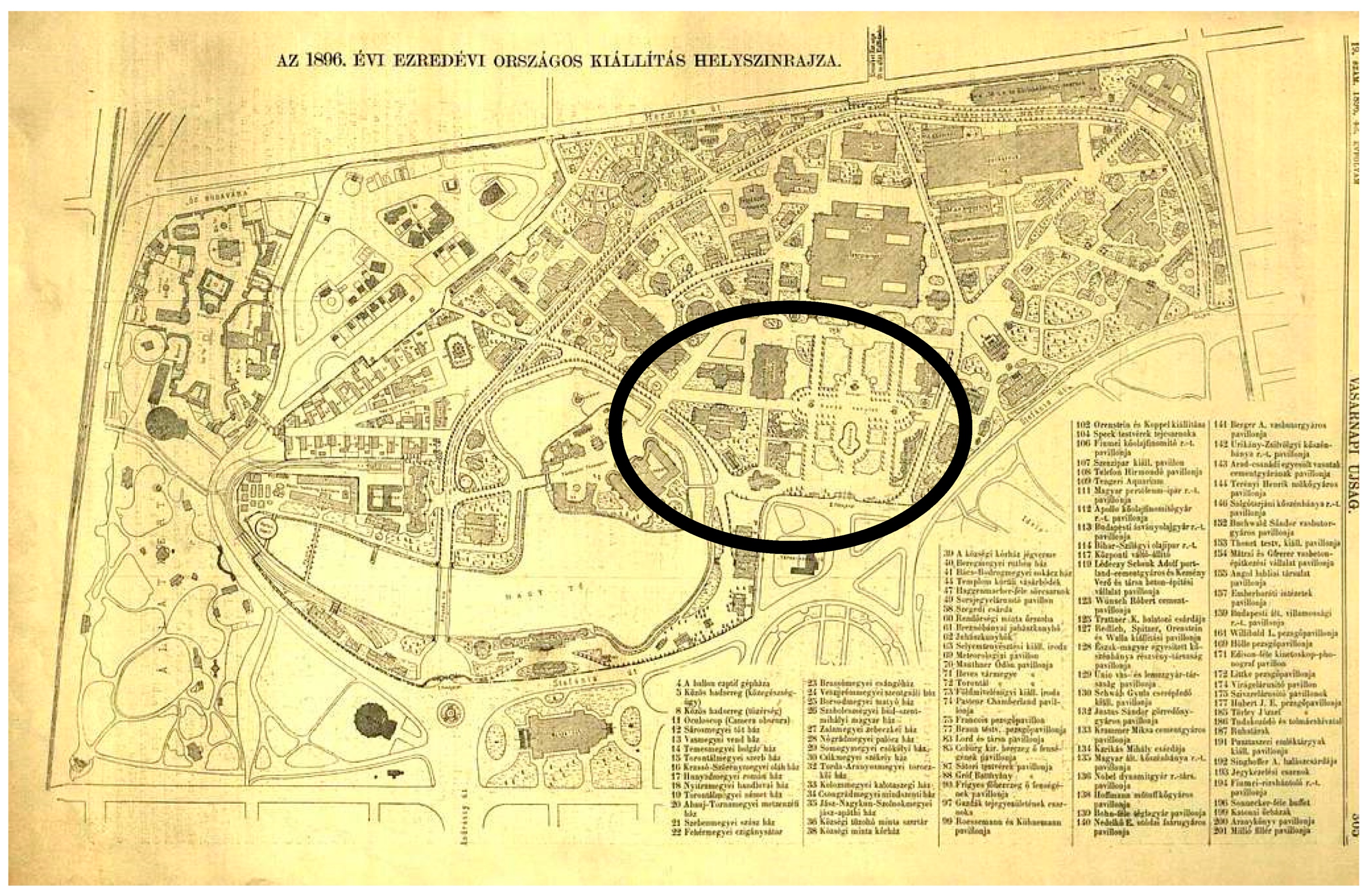
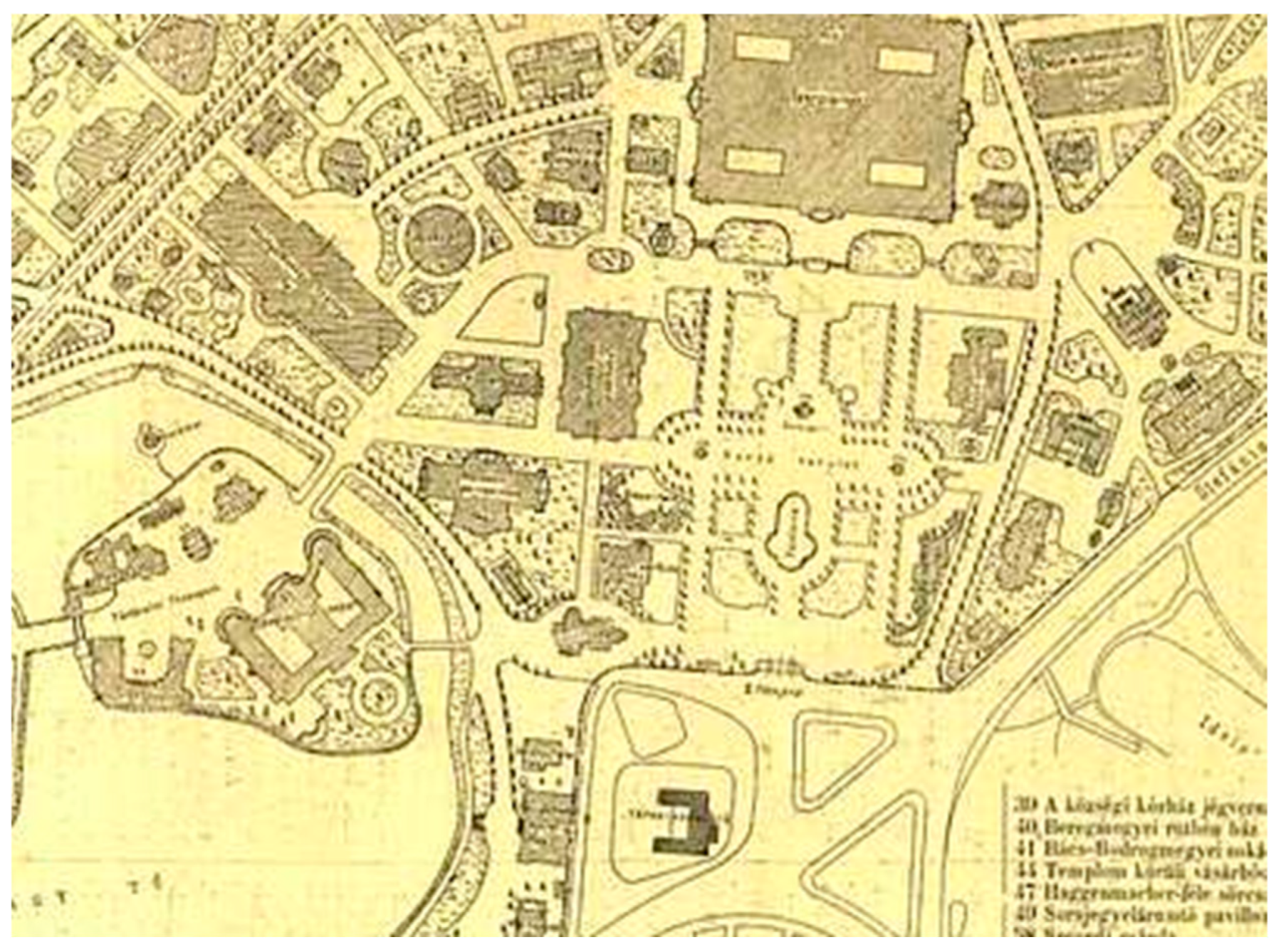
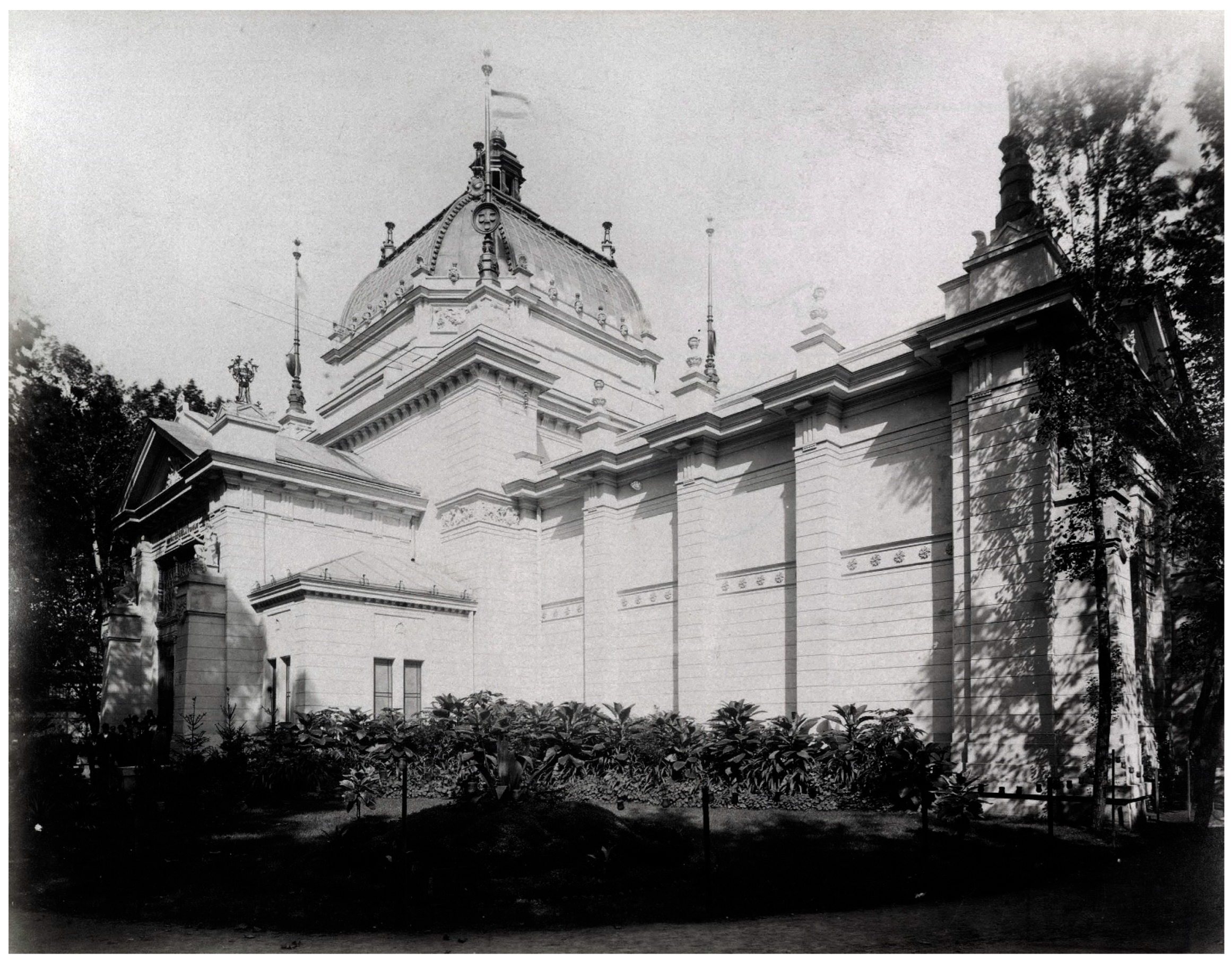

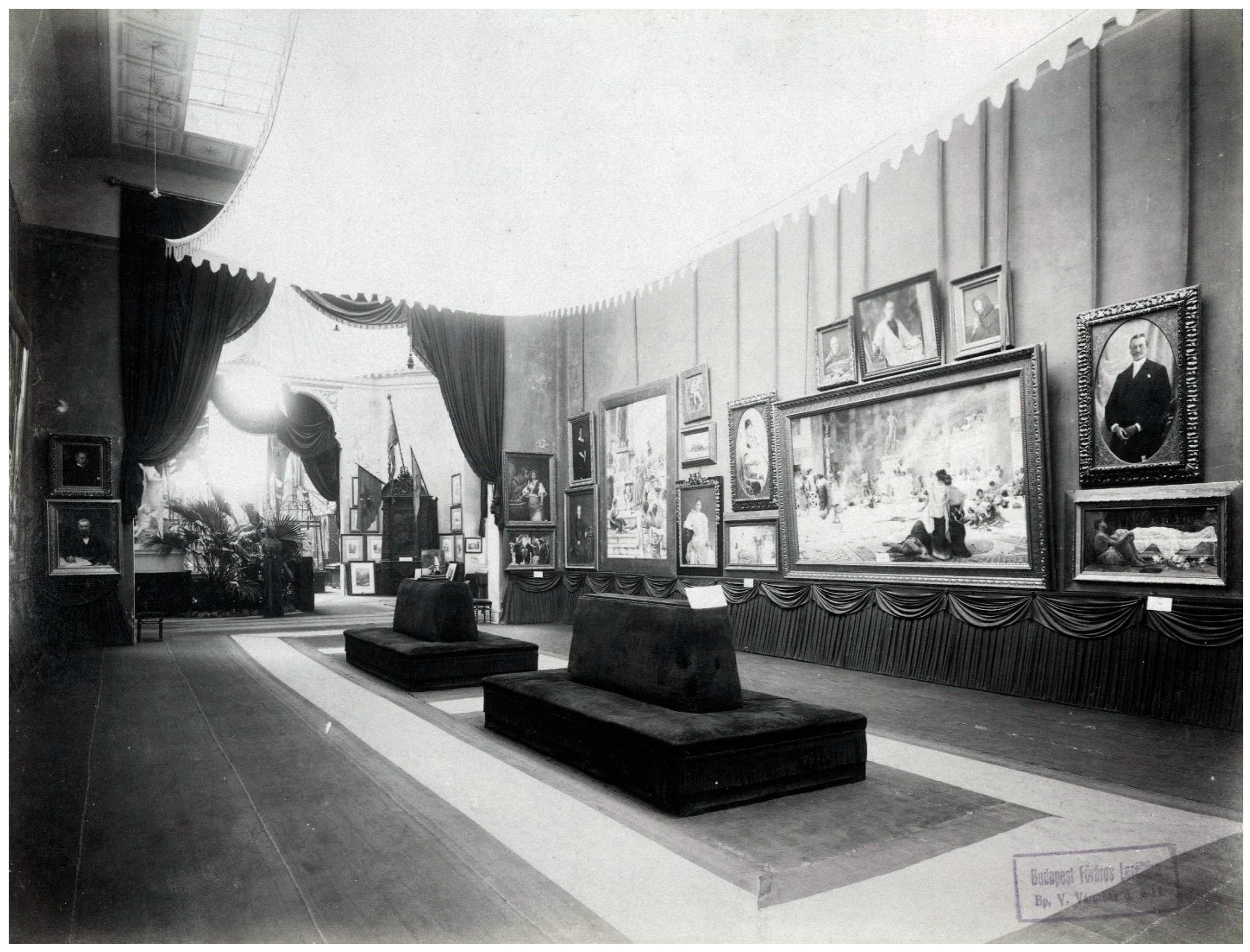
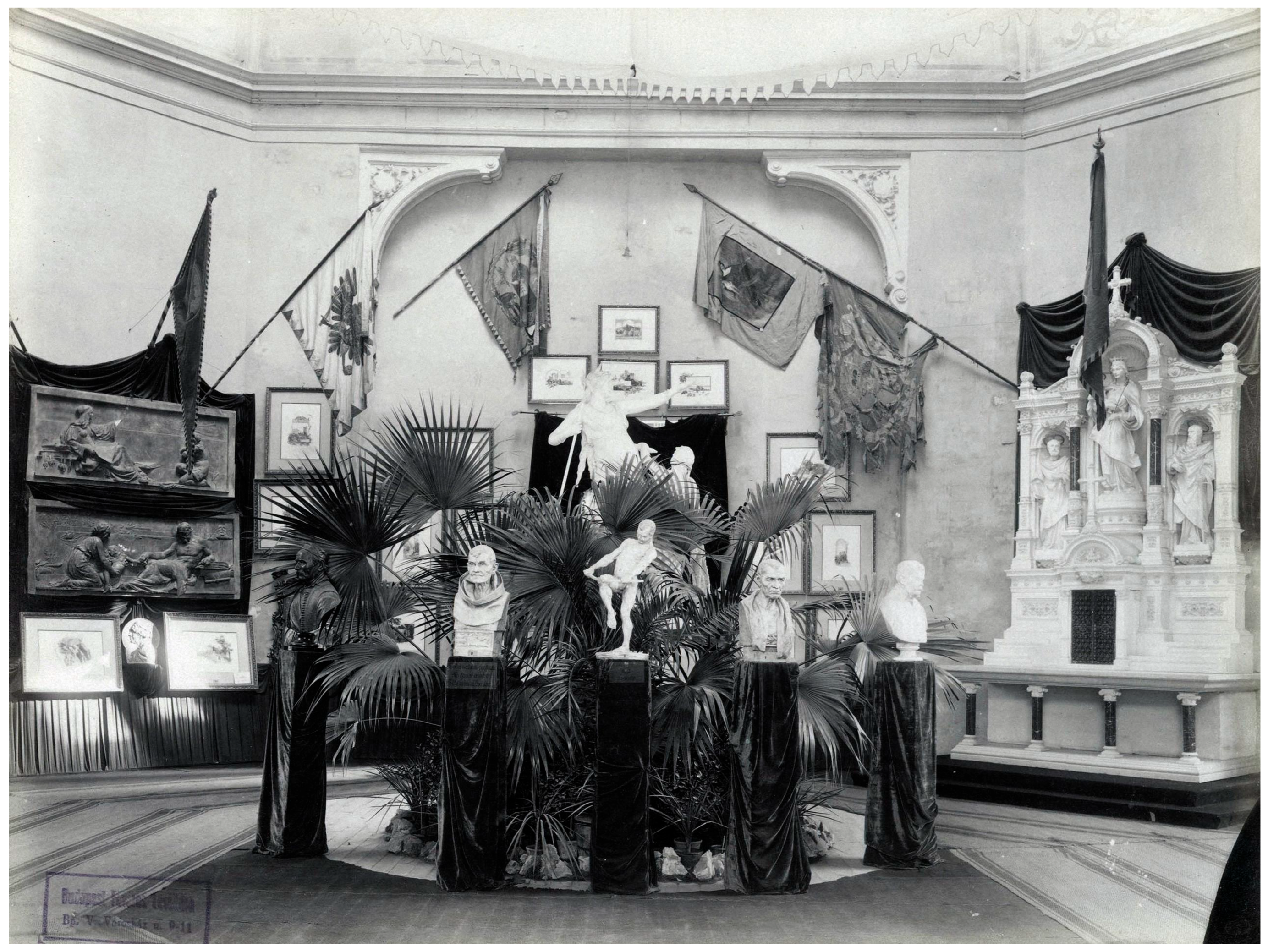

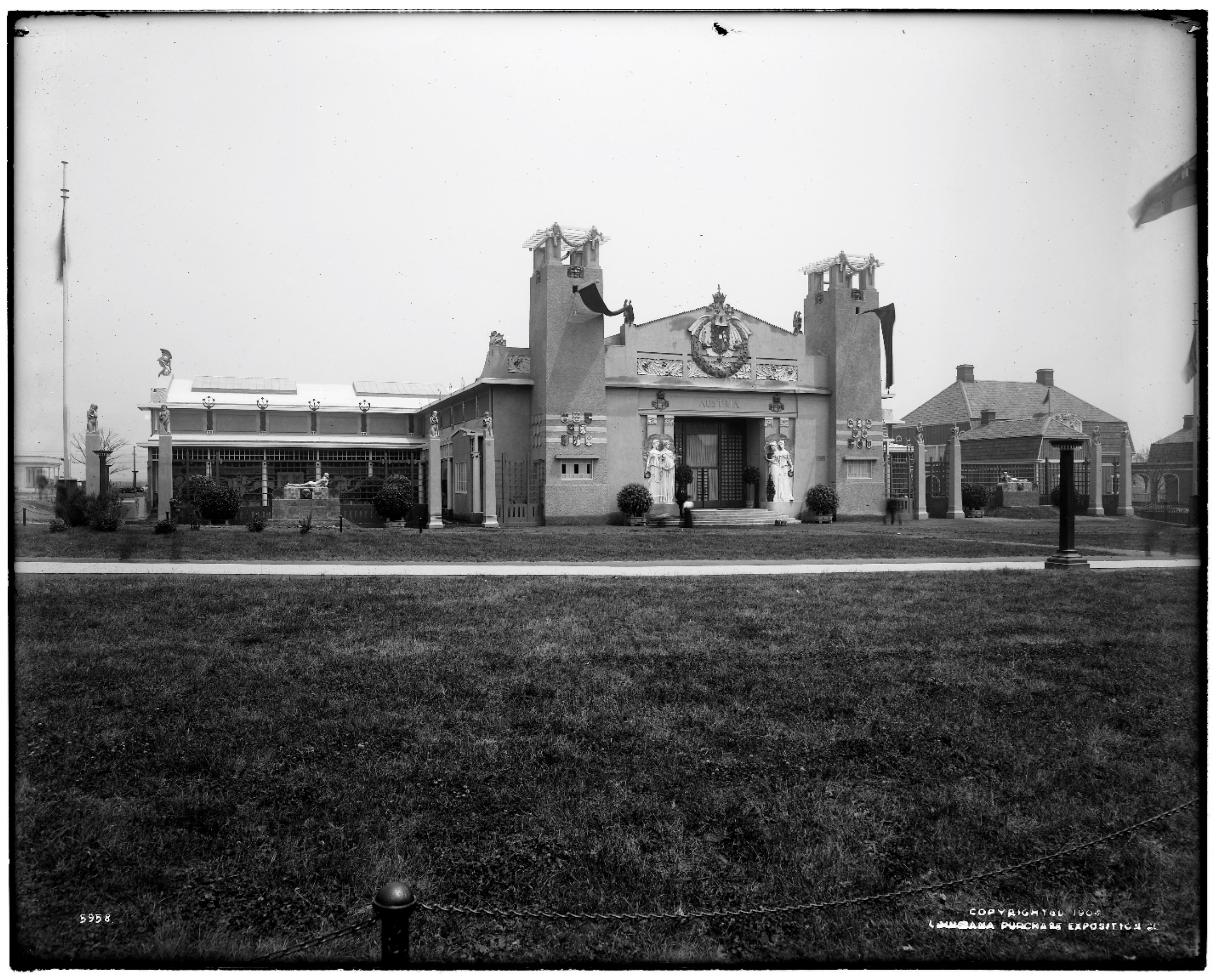

Disclaimer/Publisher’s Note: The statements, opinions and data contained in all publications are solely those of the individual author(s) and contributor(s) and not of MDPI and/or the editor(s). MDPI and/or the editor(s) disclaim responsibility for any injury to people or property resulting from any ideas, methods, instructions or products referred to in the content. |
© 2025 by the author. Licensee MDPI, Basel, Switzerland. This article is an open access article distributed under the terms and conditions of the Creative Commons Attribution (CC BY) license (https://creativecommons.org/licenses/by/4.0/).
Share and Cite
Albert, S.D. The “Disappearing” of Croatian Art in Hungarian Art Exhibitions at the Turn of the 20th Century. Arts 2025, 14, 33. https://doi.org/10.3390/arts14020033
Albert SD. The “Disappearing” of Croatian Art in Hungarian Art Exhibitions at the Turn of the 20th Century. Arts. 2025; 14(2):33. https://doi.org/10.3390/arts14020033
Chicago/Turabian StyleAlbert, Samuel David. 2025. "The “Disappearing” of Croatian Art in Hungarian Art Exhibitions at the Turn of the 20th Century" Arts 14, no. 2: 33. https://doi.org/10.3390/arts14020033
APA StyleAlbert, S. D. (2025). The “Disappearing” of Croatian Art in Hungarian Art Exhibitions at the Turn of the 20th Century. Arts, 14(2), 33. https://doi.org/10.3390/arts14020033




